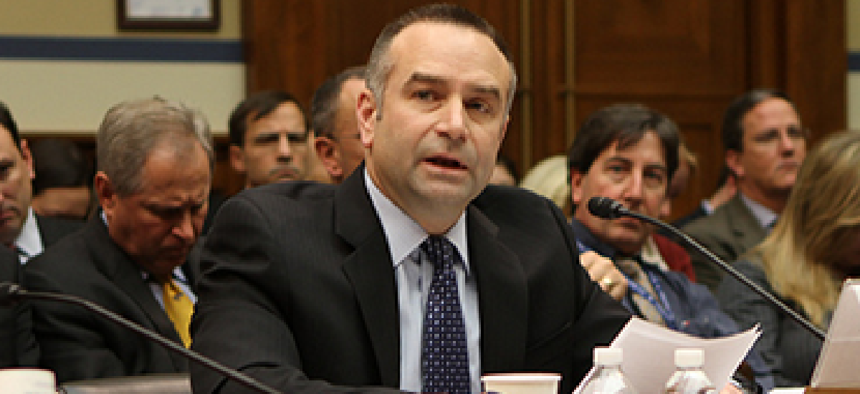Waste in IT spending takes many forms

Committee hearing covers redundant systems, failed programs and lapses in oversight, all of which contribute to billions in misspent funds.

GAO's David Powner, shown testifying at the Jan. 22 hearing, says the IT Dashboard's figures on wasteful spending are understated. (House Oversight Committee photo)
Wasteful projects that run over budget or never become operational have long been the ugly reality of federal IT. Now an oversight committee has had enough and is demanding the Office of Management and Budget step up and hold agencies responsible for these lavish failures.
In his opening statement at a Jan. 22 hearing before the Committee on Oversight & Government Reform, Chairman Darrell Issa (R-Calif.) noted how botched programs and project overruns make up 75 percent of all larger federal IT programs. A considerable portion of agencies’ IT budgets also goes to sustaining archaic IT systems, wasting as much as $20 billion every year, he said.
"But let’s understand: In this case, it’s not the waste of the $20 billion – it’s what that $20 billion could do [if] properly applied to our transparency into our government,” the chairman stressed. “The leveraging of $20 billion to save $200 billion is why it’s essential what we fix this part of government that seems to be so broken.”
As examples of projects gone awry, Issa cited the Air Force’s billion-dollar logistics system that failed and was recently terminated. The Agriculture Department spent $94 million in four years to develop supply-chain management systems for food distribution – without any successes ever materializing, he said.
“We will not allow the federal government to continue doing things over and over again when in fact, more money has not made it work better,” Issa said.
And money has undoubtedly been spent: In the past decade, federal IT cost taxpayers $600 billion, often to pay for pricey systems and projects that were already redundant. Rep. John Mica (R-Fla.), chairman of the Subcommittee on Government Operations, cited a Government Accountability Office report which showed that the federal government in 2011 funded 622 human resources systems, 580 financial management systems and 777 supply-chain management systems.
These duplicatative resources add up to “some pretty significant costs,” Mica said. But money has also been poured into systems that never see daylight, he said. For example, the National Archives and Records Administration funnelled $375 million into developing an electronic records archives system, a project that never became fully functional. Similarly, the Office of Personnel Management shuttered its retirement modernization program after spending $250 million.
Despite these unsuccessful investments, OMB in the past years abandoned the practice of detailing along with the president’s annual budget submission troublesome federal IT investments, Mica said. He urged the agency to identify the responsible parties and hold them accountable.
“OMB has to be willing to step up and take responsibility and say, ‘the buck stops here,’” he said.
Currently, the IT Dashboard – a White House tool that tracks the progress of federal IT projects – shows 250 at-risk investments totaling $12.5 billion. However, that figure is an understatement, said David Powner, director of IT management issues at GAO.
Areas that need extra attention include better transparency and action on troubled projects, starting with accurate information on the IT Dashboard, he said.
“We can’t have situations where agencies like [the Defense Department] report no high-risk systems when in fact, they have many,” Powner said. “On the other hand, some agencies like [the Homeland Security Department] report actively and moving more their project toward a green status. However, overall agencies are nowhere near accomplishing their IT reform goal of turning around one-third of underperforming projects.”
NEXT STORY: Issa turns again to IT reforms


